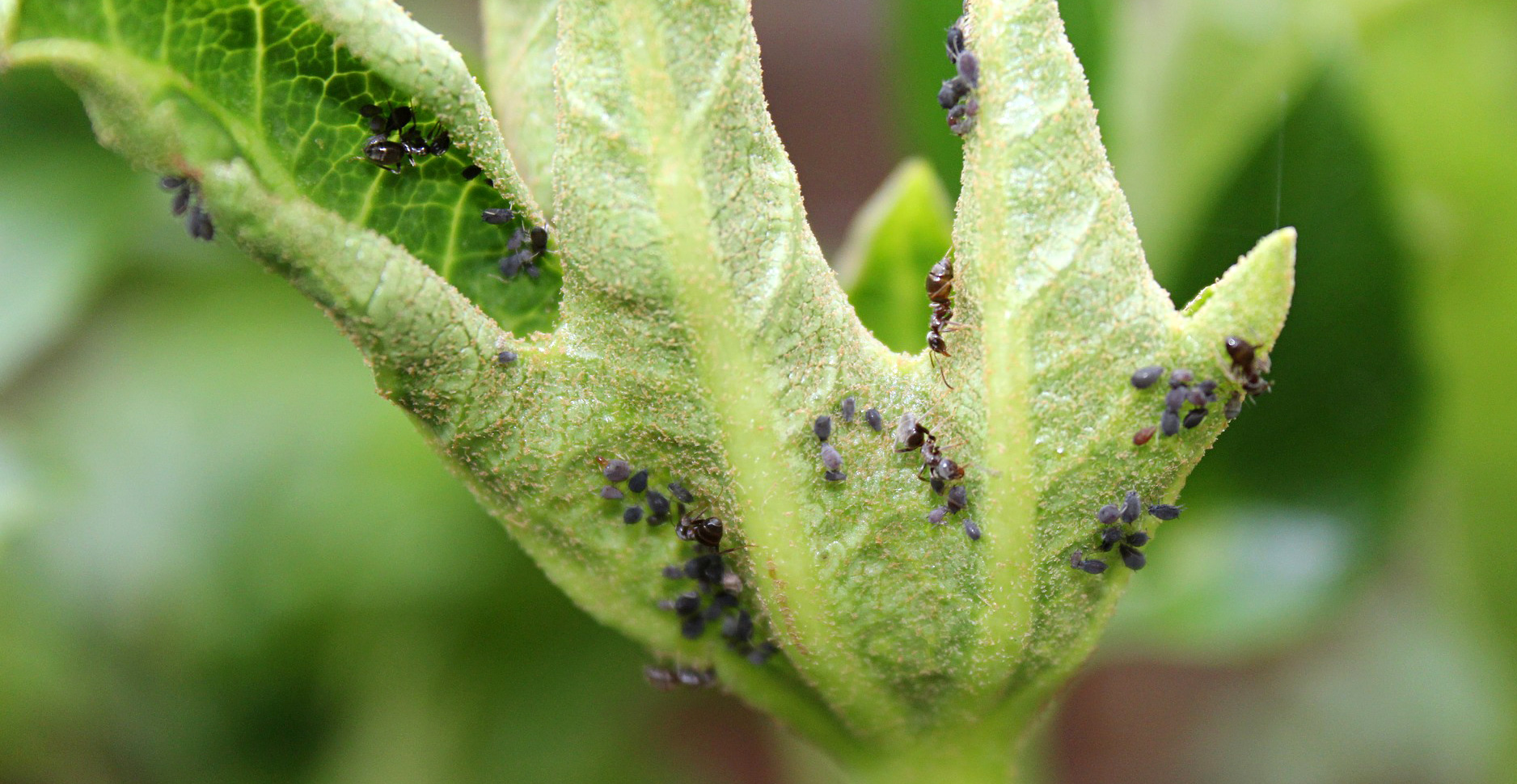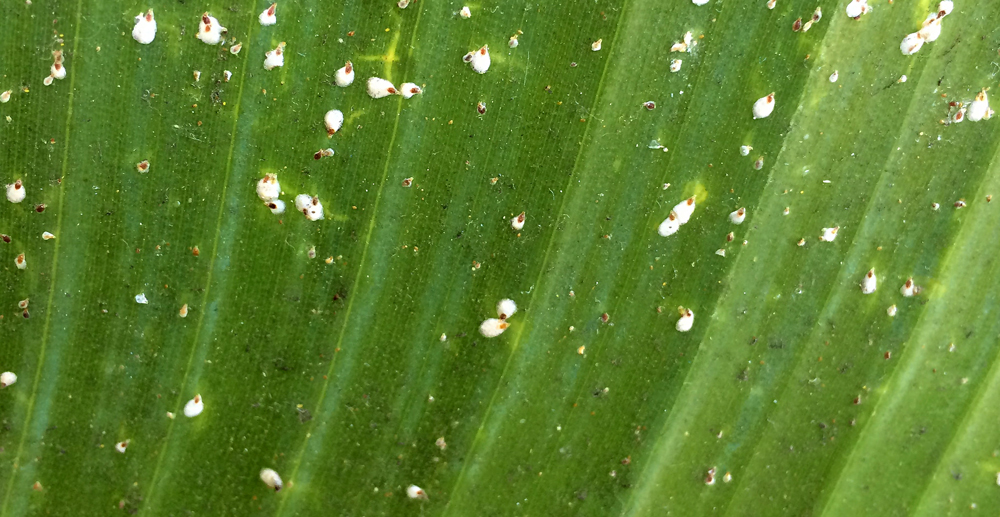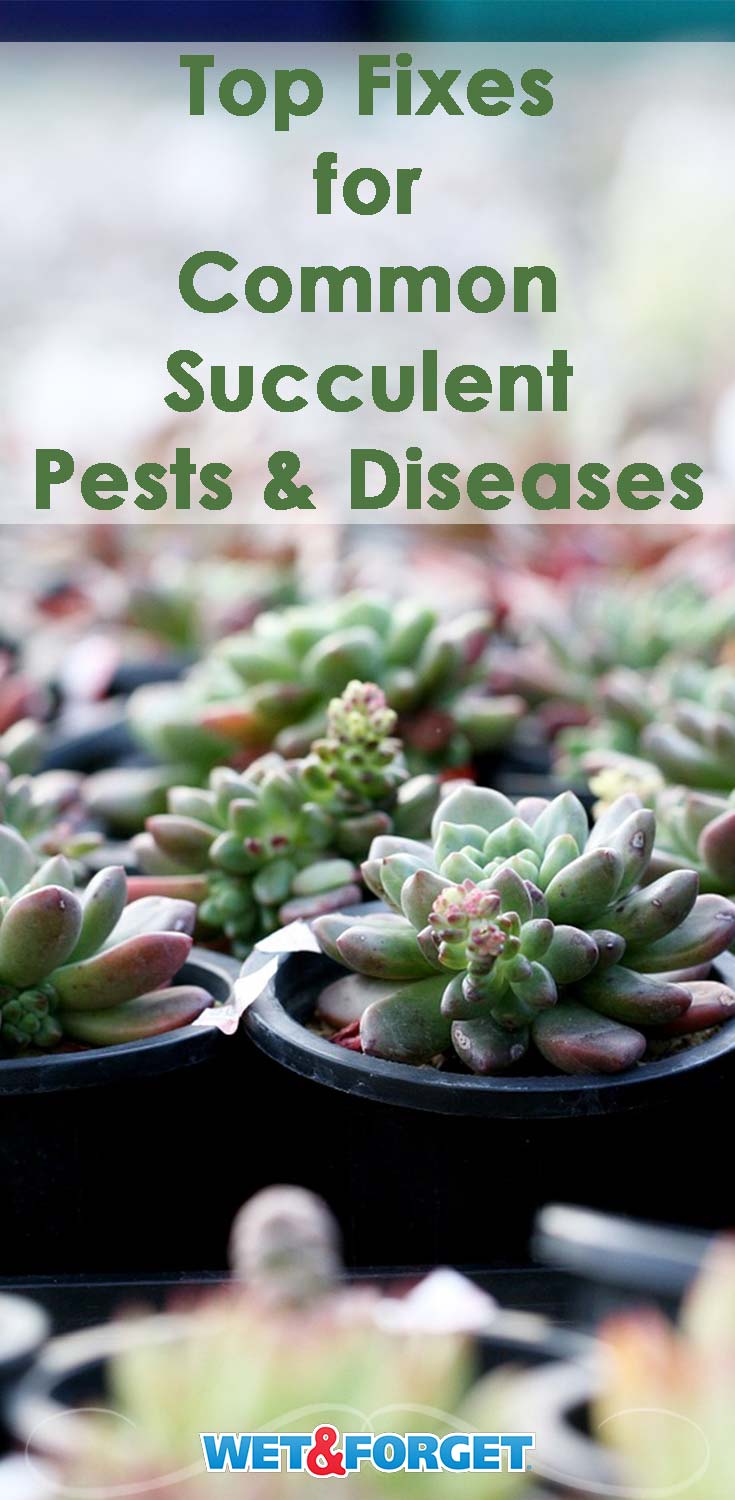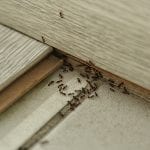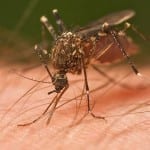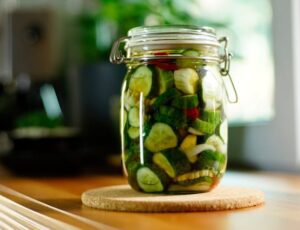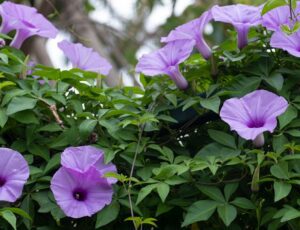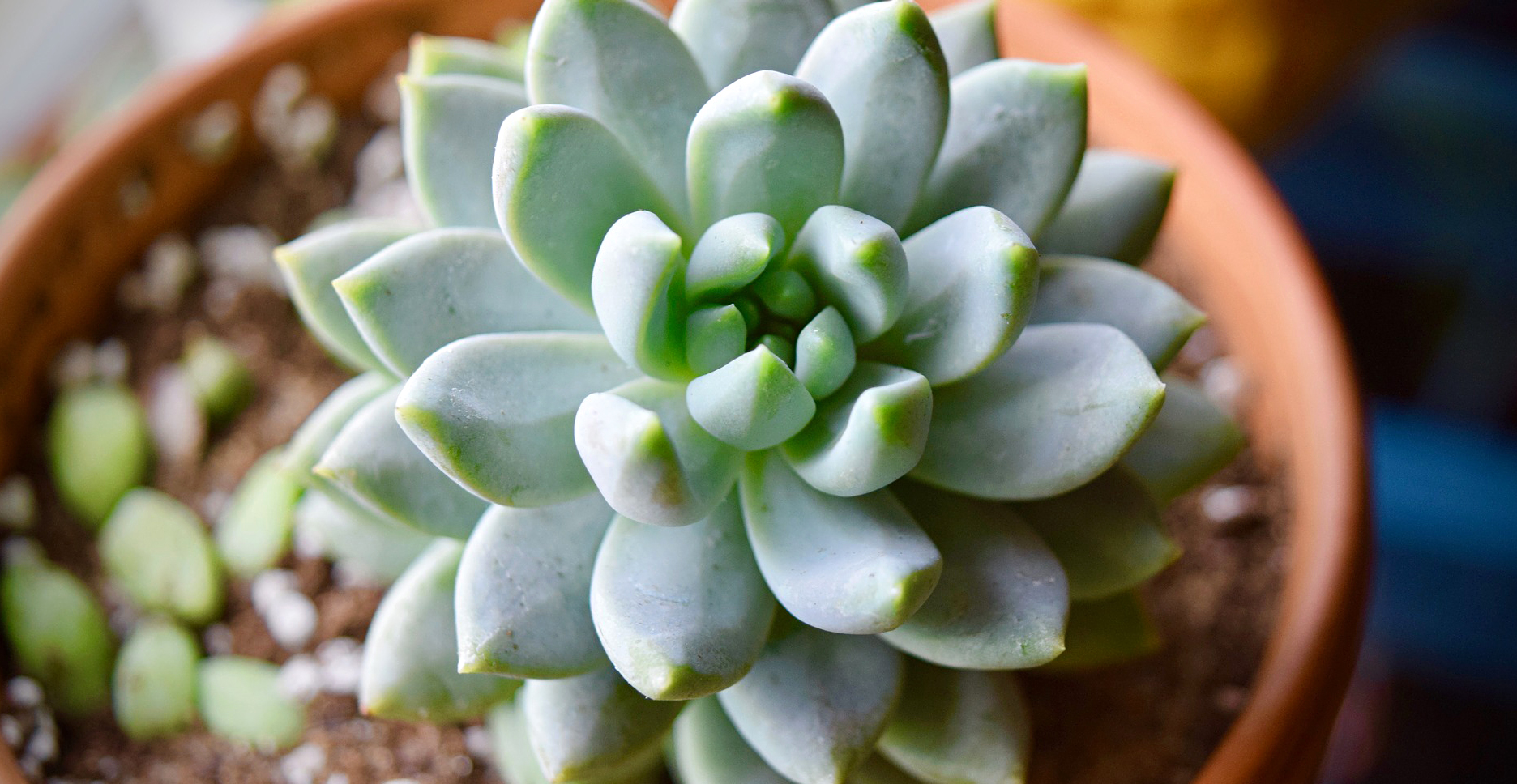
Fixes for the Most Common Succulent Pests and Diseases
Succulents include a wide range of fleshy-leaved plants and cactuses. And considering that they’re nearly foolproof to grow, they’re an excellent choice for first-time gardeners.
If your plant looks less than healthy, succulent pests and diseases could be the problem. See our tips and how-tos to detect and remedy succulent problems below.
What are the most common succulent pests and diseases?
Most common pests –
Scale looks like a white cottony covering or tiny dome-shaped shells attached to leaves and stems. To remove, scrape them off with your fingernail.
Mealybugs have a cotton-like, waxy appearance. They live in clusters along leaf veins, joints, or the underside of leaves.
Root mealybugs appear as white areas, attaching themselves to roots.
Spider mites are tiny, about 1/50 of an inch long. Spider mites appear brownish ‘dust’ when the affected foliage is lightly tapped over a sheet of white paper.
Fungus gnats look like tiny black flies, approximately 1/16th inch in diameter. They can be seen hovering just above the soil.
Signs and remedies for succulent pests –
Most pests damage succulents by sucking the life from the plant and consuming its juices.
Both scale and mealybugs suck moisture from the plant, resulting in shriveled leaves. The first symptom of scale is a sticky, black mold that appears on or near the plant. A severe infestation will eventually kill the plant.
Rid your succulent of scale by washing the foliage with insecticidal soap. (For sensitive plants, test a small area first.)
The soapy residue will minimize the bug’s regeneration. If the pests persist, then reapply insecticidal soap or apply neem oil.
To treat mealybugs, isolate the affected plant and spray with 70% isopropyl alcohol (available at drug stores and supermarkets). For small infestations, apply isopropyl alcohol applied with a cotton swab.
Root mealybugs live under the soil, sucking plant juices from the plant’s roots. Root mealybugs can make succulents more susceptible to root rot. Remove the plant from the pot. Remove any visible insects with a blast of water. Repot the plant.
Spider mites sap the life of succulents by sucking the plant’s juices. Signs of spider mites include spider-like webbing and small brown dots on new growth.
First, cover the potting soil to prevent overwatering, and then wash the spider mites from the foliage with a strong burst of water from the hose.
Fungus gnats – This insect’s larvae live in the soil, damaging roots and consuming vital nutrients. The growth of new plants may be stunted, or the plant may die.
Mature fungus gnats are harmless. Purchase sticky traps to control adult insects.
Most common diseases –
Most succulent diseases are bacterial or fungal.
Viral Infections – Succulents contract viruses through insects feeding on the plant’s sap. Eliminating insects is the first step in controlling the spread of viruses.
Succulents with viral infection may have new growth that appears abnormal or stunted. Unfortunately, viral infections are incurable, so the plant should be discarded.
Fungal Disease – High humidity and cool temperatures provide the ideal environment for growing fungus. Some of the more common fungal diseases include:
- Black Spot
- Rhizoctonia rot
- Helminthosportium stem rot
- Epiphyllum mosaic disease
- Pythium
- Phytophthora cactorum
- Anthracnose
Your succulent may have a fungal infection if you notice webbing on the soil, unusual spotting, or shriveling foliage. Therefore, the plant should be tossed, along with the surrounding dirt or potting soil.
Additional Plant Care Problems
At times, a succulent may look like it has a disease but may be attributed to poor plant care. Changing just a few daily habits can minimize the occurrence of succulent pests and diseases.
Over or under watering – giving your succulents too much water will cause splitting or rotting. A lack of moisture causes the plant to wither and eventually die.
Lack of sunlight – When a succulent doesn’t receive sufficient light, it will attempt to find it by sprouting new thin shoots that stretch toward the light. Unfortunately, the new growth is often deformed and unhealthy. Move your succulent to a sunnier location.
Sunburn on a succulent appears as white or brown spots. Furthermore, the spots appear on the sun-facing side of the plant. Move the succulent back from the window or to a location that receives less sun.
Crowded roots – A succulent that has outgrown its pot may have tightly bound roots wrapping around the pot’s interior. As a result, moisture cannot adequately move through the soil to reach the roots. Repot the plant in a larger container.
The leaves are falling off my succulent. Why?
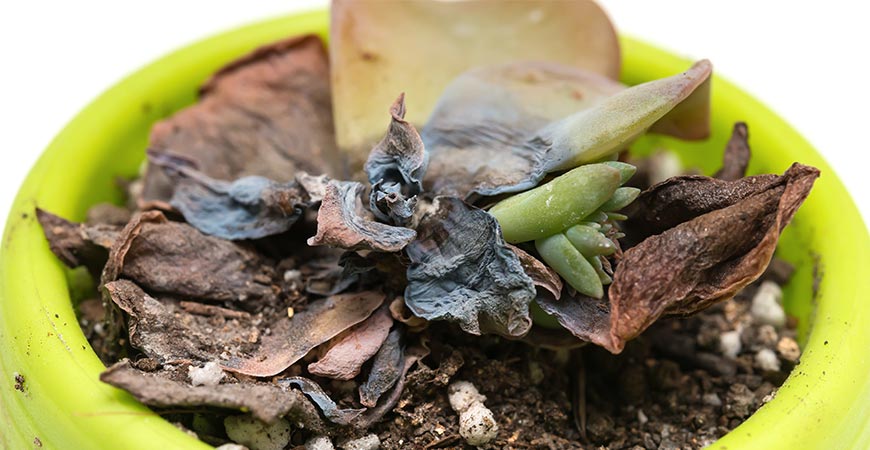
Succulents will stop growing and begin to drop leaves when stressed. Leaf drop is the plant’s natural way of reducing its energy needs. Succulents will drop leaves, sometimes suddenly, if these environmental conditions are present–
Excessive outdoor heat – Although the succulent is native to hot, arid climates, several days of soaring temperatures can cause leaf drops. If your succulent appears wilted or sunburned, move it to a shady spot.
Frosts and Freezes – Chilly temperatures can burn or blacken leaves, eventually falling from the plant. Move your plant indoors or to a sunnier location.
Not Enough Light – Succulents are native to sunny desert climates. A succulent will turn yellow or light green when it doesn’t receive enough light.
New growth will be weak, thin, and stretch toward the sun. If low light conditions continue, then leaf drops can occur. Move your succulent to a sunnier location.
Incorrect Watering – Succulents require infrequent watering. Too little water can cause leaf drops, while too much water will make the leaves swell.
The leaves may drop from the plant if they do not experience a dry period. Wait until the leaves appear slightly limp and the soil is nearly dry before adding moisture. Add water until you see it draining from the bottom of the pot.
Chemical Burning – Applying too much fertilizer, insecticidal soap, neem oil, or other chemical-based additives can send succulents into shock, causing leaf drops. Be sure to read the package instructions carefully before applying the product.
A healthy, happy succulent will more readily withstand insect damage or disease. To keep succulent pests and diseases at bay, care for your plant by providing the right amount of nutrients recommended for your particular species.
Proper light, moisture, and good soil drainage are also important. Remove spent flowers and foliage to discourage disease.
Learn more about caring for succulents here. For more gardening how-tos and tips, visit here.
Image by Scot Nelson

